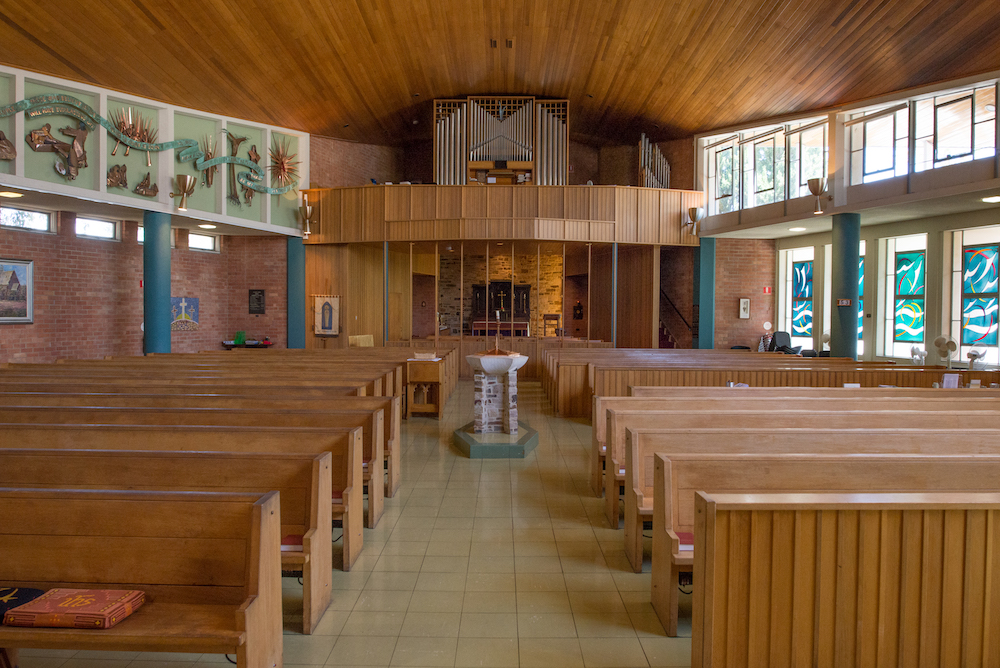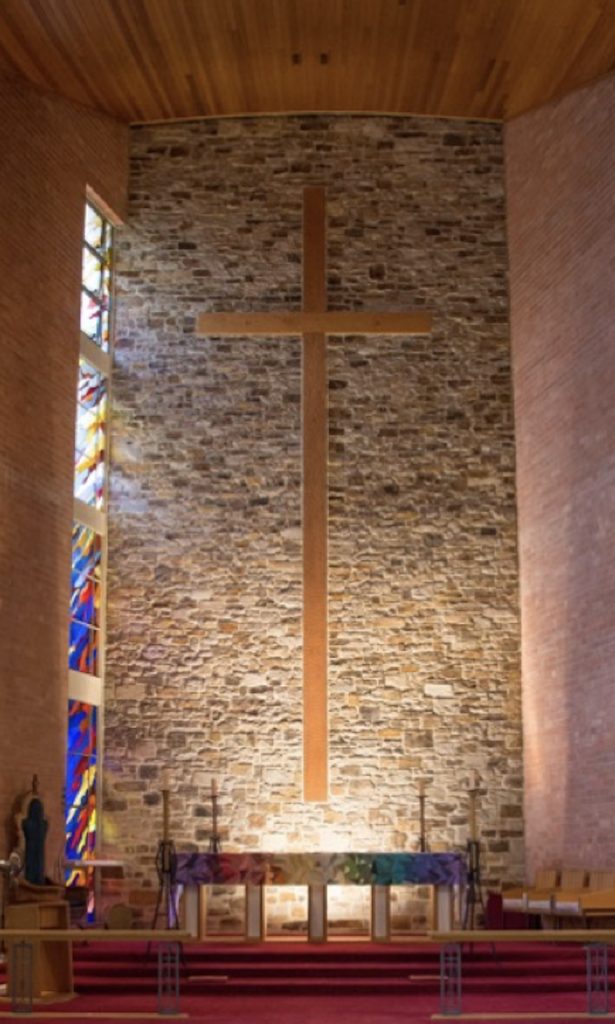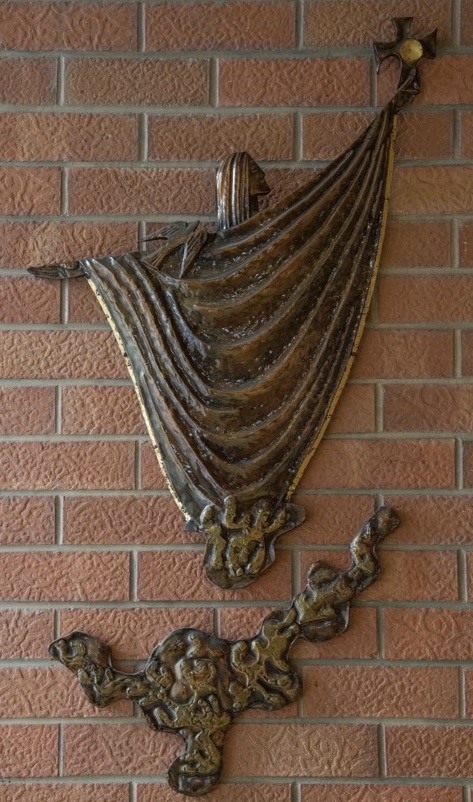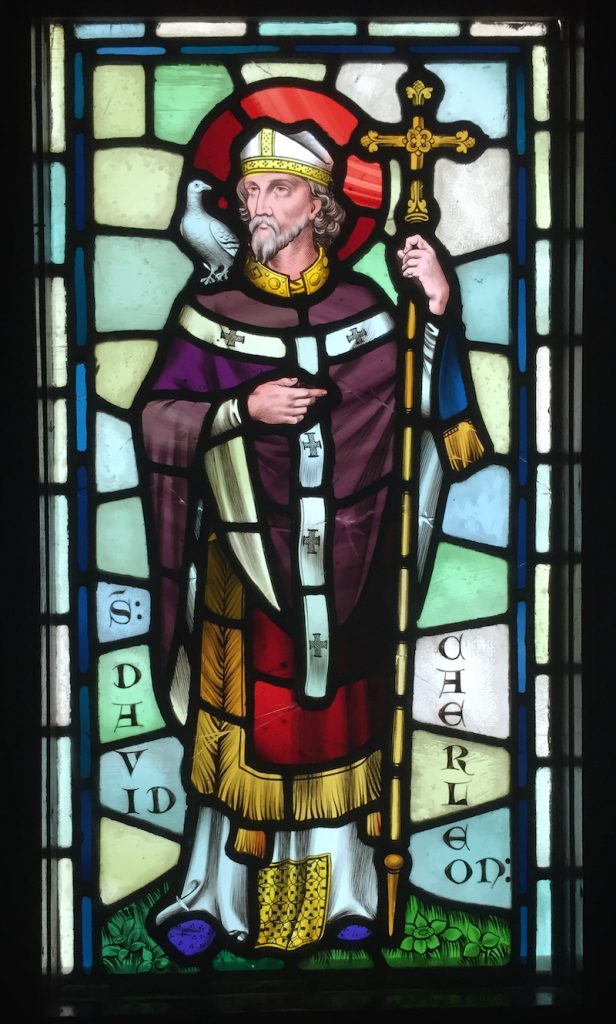The Kaurna people are the traditional owners and custodians of the lands of St David’s. We acknowledge their continuing connection to their land, waterways and culture and we pay our respects to their Elders past, present and emerging. We pray that in the power of the Holy Spirit we might all work together for reconciliation and justice in Australia.
Our priest is the Father Dr Lyndon Shakespeare. Please contact him for pastoral support, baptisms, confirmations, weddings and funerals on 0415 832 453 or [email protected]
How St David’s has grown
St David’s is part of the Anglican communion within the Diocese of Adelaide.
With 70 years of growth and consolidation behind it the Parish of St David Burnside launched into a new era with the opening on November 9th 1963 of the modern St David’s Church building.

To quote from the parish website, St David’s is “a fine example of contemporary architecture of the era. The towering white cross reaching up from the arc-shaped roof of the building is an imposing symbol of the presence of Christ in the community and can be seen from near and far”. In 2020, the church was declared Heritage listed for its mid-19thC architecture.
A comment left by a visitor states “As a mathematician I have always been interested in this church with its rhombic footprint and hyperbolic paraboloid roof . . . The church is worth visiting to appreciate its shape and also the stained glass windows, a wonderful long copper sculpture with many panels, and works of art by Voitre Marek.”
“The spacious church building seats up to 300 people and is a fitting location for events such as baptisms, weddings and funerals”.
The architect of the new church, Stewart Game, was a parishioner of St David’s and said at the time “It is an architect’s dream to be asked to design and erect a structure which is to play an important part in the lives of so many people . . . . . I was delighted and honoured when in December 1959 the Council of St David’s Burnside commissioned me to design their new church”
In fact, two sketch designs were submitted, one more traditional, the other ‘forward-looking’ and after a great deal of discussion the contemporary design was accepted.
Due to the siting of the old Burnside Pound the church could not be placed in the usual East-West orientation so was set on the diagonal, thus making better use of available space and clearly relating the new church to other adjoining buildings. The plan “is based on an ancient fossil of a trilobite, adapted to form the nave, sanctuary and Lady Chapel”

The materials were specially made brick and local Carey Gully stone, with large areas of glass, meranti timber, marble and copper. The foreman Gus Schultz, a devout Christian, was enticed out of retirement to supervise the building of the church which he regarded as “his church”, having always wanted to build a church but never having the opportunity until now.
Two items from the original church were built into the new one, thus preserving continuity: both the original altar and the traditional stained glass window were installed in the Lady Chapel of the new church where they witness to the 19C church to this day.
The Lady Chapel window, entitled Suffer the Little Children, was made in 1906 by Montgomery and Grimbley of Adelaide and Melbourne. It was mounted alongside the high altar in the modern church until the Cedar Prest windows were completed when it was transferred to the Lady Chapel.
One of the most striking features of the modern church is the massive wooden cross set into the wall of quarry stone behind the altar, with the finish on the timber being produced with an adze by a master-craftsman, a migrant from Bulgaria who had no English but who had brought with him to Adelaide his full complement of woodworking tools. The architect, Stewart Game remembered him sitting astride the timber as he worked, putting into form his superb understanding of timber and his craft.
The rector at the time, Rev. John Bleby, recalled how every afternoon before the wood-carver knocked off for the day they would together inspect the progress made that day and discuss each adze and chisel mark in the quest for perfection.
The centre of the church is dominated by the font with its base of local quarry stone, the top of Angaston marble and a copper cover.
The altar is made from one-inch thick (2.5cm) Italian travertine marble set on concrete and carved by the same firm that carved the font.
Art at St David’s
St David’s is home to a number of art works which are set off to advantage against the simplicity of the exposed brick walls.

Copper Sculptures
On the wall to the left of the sanctuary is featured a beaten copper plaque of St David by the Czech Australian artist Voitre Marek, depicting St David preaching with birds perched on his shoulders and illustrating the tradition that St David would appear to rise above the ground when he preached and that even the birds would listen to him.
There are also two beaten copper panels by Marek in the Lady Chapel.
Who was St David?
St David was born around 520, near St Bride’s Bay, Pembrokeshire, Wales and died in Menevia on Tuesday 1 March 600. He is the patron saint of Wales and St David’s Day is 1 March.
Many miracles are ascribed to St David, including the resurrection of a dead child and the restoration of sight to a blind man. One of the most famous miracles – commemorated at St David’s in a bronze sculpture – is the formation of a hill beneath him as he preached to a large crowd, allowing them to see and hear him more clearly. During this incident, a white dove is said to have landed on his shoulder, and he is depicted thus in our sculpture.

Stained glass depiction of Saint David, designed by William Burges, at Castell Coch, Cardiff
On St David’s Day, many people in Wales wear traditional Welsh clothing and daffodils or leeks. At St David’s in Burnside, we have a beautiful display of daffodils in front of the Church and meeting rooms in Spring.
Donations & planned giving
Stewardship of the resources we have been endowed with, the church, the people of the congregation and the community within we work and live are vital elements of our giving. Giving service and sharing love are two important tenets of our faith, and the money that is given to St David’s to continue its work in the community is carefully spent.
A history of our buildings
Not just a single edifice, St David’s comprises three significant buildings. Set back from Glynburn Road at bus stop number 17 and framed by two shady trees, the original stone church, now the church hall, dates from 1887. The modern brick church, a hundred metres to the south on Glynburn Road, was built in 1963, while standing between these two we find the oldest building of them all, the current Church Office, erected as the Burnside Council Chambers in 1869. You can read about the history of our church and its buildings here.